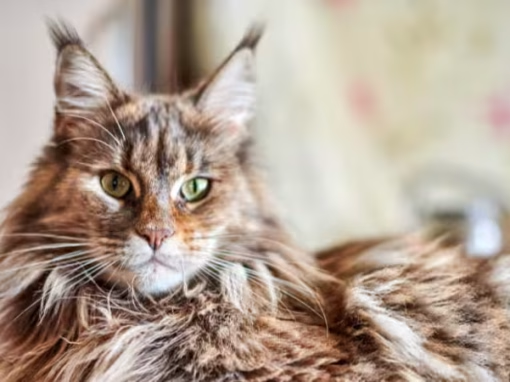The Birman cat breed, often referred to as the Sacred Cat of Burma, is shrouded in legend and mystery. Stories suggest that these striking cats once lived alongside temple priests in Burma, with their blue eyes said to be a gift from a goddess and their white paws symbolising purity. While these tales are captivating, historical records point to the breed’s establishment in France during the early 20th century.
A pair of Birmans is believed to have arrived in France around 1919, with the female carrying kittens that formed the foundation of the modern breed. Recognised officially by the Cat Club of France in 1925, Birmans nearly disappeared during World War II, with only a handful surviving. Through careful breeding with Persians and Siamese cats, the population was restored. By the 1960s, the breed had reached the United States and was officially recognised by the Cat Fanciers’ Association in 1967. Today, the Birman cat breed remains a beloved companion worldwide.
Table of Contents
Appearance and Physical Traits
Size and Body Structure
The Birman cat breed is medium to large in size, with males often heavier than females. Adults typically weigh around 12 pounds, although this can vary slightly. Their bodies are longer than they are tall, with heavy bones and a strong, stocky build. Sturdy legs support rounded paws, giving them a solid yet elegant appearance.
Head and Facial Features
Birmans have broad, rounded heads with full cheeks and medium-sized ears that taper to rounded tips. Their noses are Roman-shaped, featuring a distinctive profile that rises gently from the forehead before sloping downward. These features combine to give the breed a noble and expressive look.
Coat and Colouration
Perhaps the most iconic feature of the Birman cat breed is its silky, medium-to-long coat. Unlike other long-haired breeds, Birmans lack a dense undercoat, making their fur less prone to tangling or matting. Their coats are soft, flowing, and particularly full around the neck, resembling a mane in males.
All Birmans display pointed colouration, with pale bodies and darker markings on the face, ears, legs, and tail. A hallmark of the breed is its pristine white “gloves” on all four paws, a genetic trait that sets them apart. Coat colours range from seal, blue, chocolate, and lilac to red, cream, and tortoiseshell variations. Kittens are born completely white, gradually developing their points and glove markings as they mature.
Eyes
Every Birman cat has deep blue eyes, medium to large in size, set widely apart. Their sapphire gaze adds to their distinctive charm and mystique.
Personality and Behaviour
Affectionate Companionship
Birmans are known for their affectionate, people-oriented behaviour. Often called “velcro cats,” they thrive on companionship and enjoy following their owners from room to room. They are gentle, loyal, and enjoy sitting in their owner’s arms as much as they enjoy exploring.
Temperament
These cats are generally laid-back and tolerant, making them excellent pets for families with children and other animals. While playful and curious, they are not overly demanding or aggressive. They are intelligent and can even learn games such as fetch. Their voices are soft and chirping, adding to their endearing nature, although some can become talkative if they receive frequent responses to their meows.
Adaptability
The Birman cat breed adapts well to different environments as long as it receives love and attention. They are social creatures and may become lonely if left alone for long periods, making them an ideal choice for households with more than one pet or where someone is often home.
Care and Maintenance
Grooming Needs
Thanks to their single coat, Birmans are relatively low-maintenance compared to other long-haired cats. A weekly combing is usually enough to keep their fur smooth and free of tangles. They shed more heavily in spring, when more frequent grooming is recommended. Their fur rarely mats, but regular brushing helps to minimise shedding on furniture and clothing.
Feeding and Nutrition
Birmans do not require specialised diets, but a high-quality cat food is essential to maintain their health and coat condition. Fresh water should always be available, ideally placed a short distance from food to encourage proper hydration. Moderation with treats is key, as obesity can shorten their lifespan and contribute to health issues.
Exercise and Enrichment
Although less hyperactive than some breeds, Birmans enjoy play and mental stimulation. Interactive toys, scratching posts, and daily engagement with their owners keep them content. They often get along well with other cats and even dogs, enjoying companionship and shared playtime.
Health Care
Birmans generally live between 9 and 15 years, though many reach older ages with proper care. They are susceptible to the same common feline health issues as other breeds, but certain conditions appear more frequently in Birmans. These include hypertrophic cardiomyopathy (a form of heart disease), eye problems such as cataracts or corneal sequestration, and an increased risk of feline infectious peritonitis (FIP).
Routine veterinary visits, vaccinations, parasite prevention, and regular dental care are essential to keeping them healthy.
Special Considerations for Potential Owners
The Birman cat breed’s gentle temperament and affectionate nature make it a perfect fit for many types of households. They are patient with children, sociable with other pets, and affectionate with seniors looking for a calm companion. Their need for attention, however, means they are best suited for families who can dedicate time and affection to them daily.
Birmans are also slow to mature, often taking three years to reach their full physical and coat development. Owners should be prepared for this gradual growth process, along with their playful kitten-like behaviour in the early years.
The Lasting Appeal of the Birman Cat Breed
The Birman cat breed combines elegance with affection, offering a balance of beauty, charm, and companionship. With their striking blue eyes, luxurious coats, and loving temperaments, it is no surprise that they consistently rank among the most popular breeds. Their history of survival and their legendary past only add to their appeal, making them not just pets but treasured members of the family.



